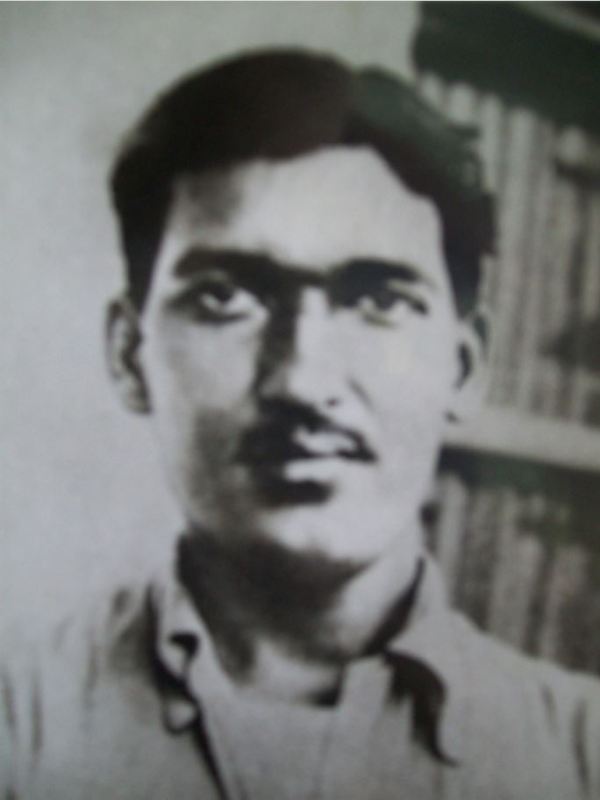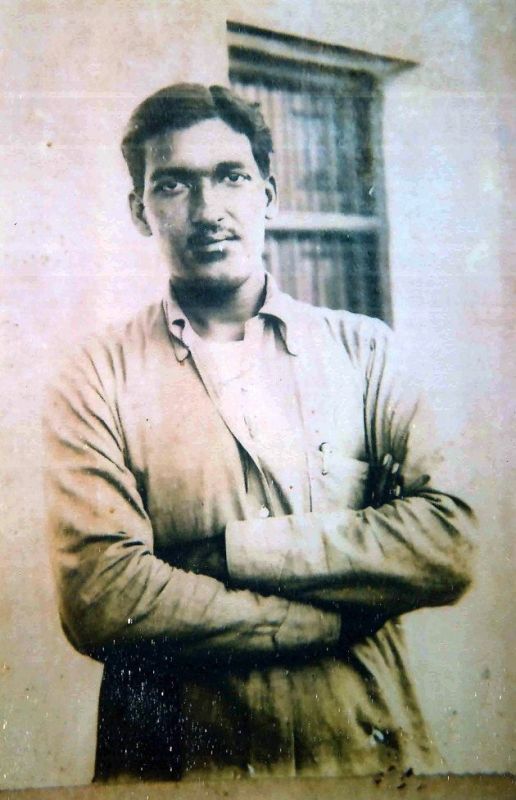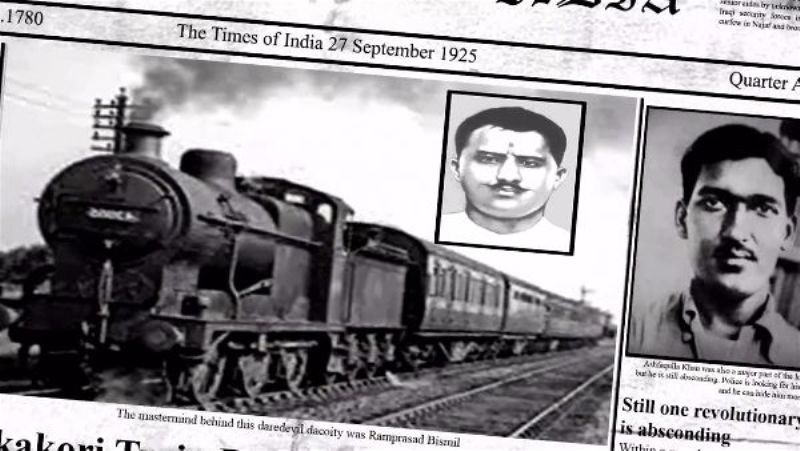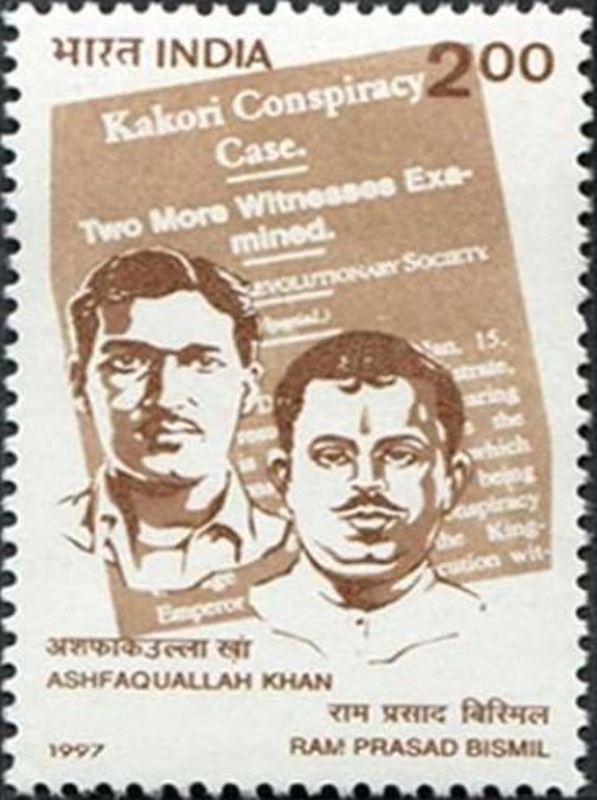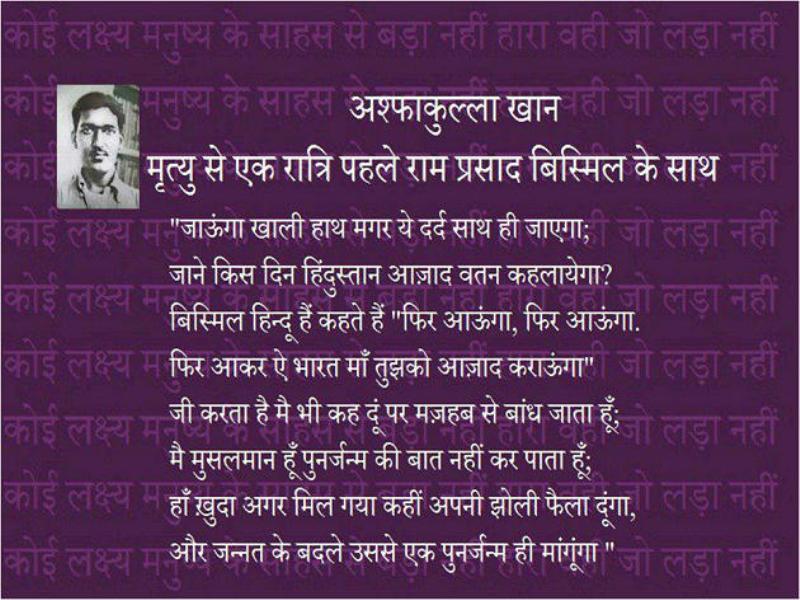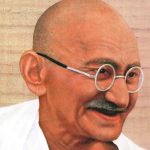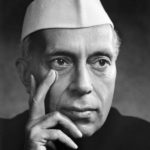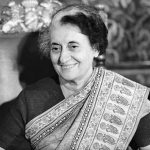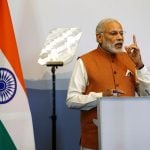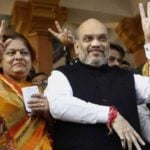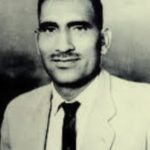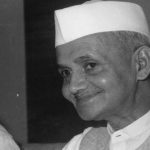Ashfaqulla Khan Age, Death, Wife, Family, Biography & More
| Bio/Wiki | |
|---|---|
| Profession | Indian Freedom Fighter |
| Famous for | Being one of the masterminds of the Kakori Train robbery case in 1922 during British empire in India |
| Physical Stats & More | |
| Eye Colour | Black |
| Hair Colour | Black |
| Personal Life | |
| Date of Birth | 22 October 1900 (Monday) |
| Birthplace | Shahjahanpur, United Provinces, British India (Present - Uttar Pradesh) |
| Date of Death | 19 December 1927 |
| Place of Death | Faizabad, United Provinces, British India (Present - Uttar Pradesh, India) |
| Age (at the time of death) | 27 Years |
| Death Cause | Ashfaqulla Khan was hanged till death by the British government under Kakori train robbery case [1]The Print |
| Zodiac sign | Libra |
| Nationality | Indian |
| Hometown | Shahjahanpur, United Provinces, British India (Present - Uttar Pradesh) |
| Caste | Ashfaqulla Khan belonged to a Muslim Pathan family of the Khyber tribe [2]Jagran Blog [3]The Hindu |
| Relationships & More | |
| Marital Status (at the time of death) | Unmarried |
| Family | |
| Wife/Spouse | N/A |
| Parents | Father- Shafiqullah Khan Mother- Mazharunissa |
| Siblings | Elder Brothers- 3 • Chhota Ulla Khan • Riyasatullah Khan • Name Not Known |
Some Lesser Known Facts About Ashfaqulla Khan
- Ashfaqulla Khan was an Indian revolutionary who contributed to the establishment of the Hindustan Republican Association (HRA) organisation as a freedom fighter and activist during India’s struggle for independence. In 1922, he was involved in the Kakori train robbery as a prime mover. Kakori train robbery was the prominent incident of India’s independence movement.
- Ashfaqulla Khan used to write diaries and patriotic poems regularly. He was a great writer. It was highlighted by Khan in one of his writings that his maternal family members were policemen and administrative officers in the British government, and his father belonged to a military family and his paternal family members were mostly uneducated.
- Warsi’ and ‘Hasrat’ were the pseudonyms used by Ashfaqulla Khan while writing poems or ghazals in Urdu. Some of his Shayari were also penned in English and Hindi languages by him. Mostly, he wrote patriotic poems and ghazals, and a few lines from his famous poem are mentioned below:
किये थे काम हमने भी जो कुछ भी हमसे बन पाए, ये बातें तब की हैं आज़ाद थे और था शबाब अपना; मगर अब तो जो कुछ भी हैं उम्मीदें बस वो तुमसे हैं, जबां तुम हो, लबे-बाम आ चुका है आफताब अपना। जाऊंगा खाली हाथ मगर ये दर्द साथ ही जायेगा, जाने किस दिन हिन्दोस्तान आज़ाद वतन कहलायेगा? बिस्मिल हिन्दू हैं कहते हैं “फिर आऊंगा, फिर आऊंगा,फिर आकर के ऐ भारत मां तुझको आज़ाद कराऊंगा”। जी करता है मैं भी कह दूँ पर मजहब से बंध जाता हूँ, मैं मुसलमान हूं पुनर्जन्म की बात नहीं कर पाता हूं; हां खुदा अगर मिल गया कहीं अपनी झोली फैला दूंगा, और जन्नत के बदले उससे यक पुनर्जन्म ही माँगूंगा।”
His writings pointed towards the divide and rule conspiracy of the English empire in India. Another famous sentence from his writings is mentioned below:
Phoot daalkar shaasan karne ki chaal ka ham par koi asar nahi hoga aur Hindustan azad hokar rahega” (Your conspiracy to divide and rule India will not work; We will make Hindustan ours.)”
- Chhota Ulla Khan was one of the elder brothers of Ashfaqulla Khan. Chhota Ulla Khan was the classmate of Pandit Ram Prasad Bismil. After the Mainpuri Conspiracy case in 1918, Ram Prasad Bismil was absconding from the British police. Chhota Ulla Khan used to narrate the brave patriotic stories of Ram Prasad Bismil to Ashfaqulla Khan.
- Ashfaqulla Khan was inspired by the patriotic personality of Pandit Ram Prasad Bismil, thereby, Khan tried hard to meet him when Bismil came to Shahjahanpur, Uttar Pradesh in 1920. In 1922, Khan met Bismil during a public meeting organised by the non-cooperation movement under the leadership of Mahatma Gandhi. However, the meeting was limited to the exchange of Khan’s poetry and ghazals with Bismil.
- Ram Prasad Bismil belonged to the Hindu Pandit community and was also a follower of the Arya Samaj movement whereas Ashfaqulla Khan belonged to a Muslim community. Reportedly, irrespective of caste, colour, and religion, Bismil aimed to attain independence for the motherland. Therefore, Ram Prasad Bismil allowed Ashfaqulla Khan to join the Hindustan Republican Association (HRA) organisation. It was commented by Khan’s grandson ‘Ashfaq Ullah Khan’ in a conversation with a media house that in the beginning, Bismil hesitated to admit Khan into his gang of armed revolutionaries. He stated,
Like other Pathans of Shahjahanpur, Khan’s family was rich and well-placed. His father was a kotwal and hence Bismil took time to draft him into the party. Bismil admitted that Khan had to bear a lot of pressure to disown him but never yielded. Their friendship was higher than the usual ones as it was based on common ideology, ideals and patriotism.”
- In 1922, the non-cooperation movement that was initiated by Mahatma Gandhi was suspended by him after the massive massacre at Chauri Chaura, a small town in the district of Gorakhpur, Uttar Pradesh. A large number of youth and revolutionaries were associated with this movement to struggle for the independence of India. The halting of the non-cooperation movement disappointed these young freedom fighters and Ashfaqulla Khan was one of them. Eventually, Khan diverted towards the revolutionary movement led by Pandit Ram Prasad Bismil of Shahjahanpur.
- In 1924, under the guidance and leadership of Ram Prasad Bismil, Ashfaqulla Khan and his companions decided to establish their separate revolutionary organisation to fight against British rule in India. The Hindustan Republican Association (HRA) was formed in 1924 that focussed on the armed revolutions against the British Raj in India.
- While fighting for India’s Independence, Ram Prasad Bismil and his companions looted some local villages to finance the expenses of the Hindustan Republican Association (HRA) movement soon after its establishment. The main focus of this movement was to attain independence from Britishers through armed forces, unlike Mahatma Gandhi’s non-violence movements. Ashfaqulla Khan was involved in local dacoities by using his brother’s licensed rifle. In 1925, Ram Prasad Bismil and other revolutionaries of the Hindustan Republican Association (HRA) organisation planned to rob the Kakori train to meet the expenses of the arms and ammunitions. Initially, Khan was against the train dacoity, and he gave his opinion to his group members that the dacoity could result in the death of several innocent passengers and suggested his gang members drop the plan. He recommended,
Friends, I consider it a hasty step. It may be a good plan in some ways. But let us think of our strength and the strength of the Government. In an ordinary dacoity, much money is not involved. Besides, the Government will treat it as one of the many usual occurrences. So we shall have to face only what the police normally does in such cases. It will be a different tale when he meddles with money belonging to Government. The entire government machinery will be used to trace and crush us. In my opinion we cannot escape detection and punishment. Our party is not strong enough. Let us drop this plan.”
The advice given by Khan was overlooked by his team members and the passion to see India independent pushed them to rob the Kakori train in 1925. This robbery was planned to boost the arms revolutions through the Hindustan Republican Association (HRA) movement in India against the English empire.
- On 8 August 1925, a meeting was conducted in Shahjahanpur to rob the Kakori train by the revolutionary members of the Hindustan Republican Association. Once, it was noticed by Ram Prasad Bismil on his journey that there were no security arrangements of the government treasury on the Kakori-Lucknow train. Ashfaqulla Khan, Ram Prasad Bismil, Rajendra Lahiri, Thakur Roshan Singh, Sachindra Bakshi, Chandrashekar Azad, Keshab Chakravarty, Banwari Lal, Murari Lal Gupta, Mukundi Lal, and Manmathnath Gupta were given the responsibility to rob the train.
- On 9 August 1925, the train departed from Shahjahanpur to Lucknow, and the revolutionaries already boarded the train. The chain of the train was pulled by someone in the middle of the journey. This stopped the train, and the guard came out of the train to check the reason for the sudden chain pulling. Ashfaqulla Khan, Sachindra Bakshi, and Rajendra Lahiri also came out of the train from the second class compartment to carry out their plan. As soon as they got the chance, the revolutionaries grabbed the guard, and some of them pushed the driver of the train out of it and held him tightly. Two of the total revolutionaries were given the responsibility to stand at both ends of the train with their loaded rifles to keep an eye on any doubtful movement. The revolutionaries also alerted the passengers of the train during the robbery. They said,
Travellers, do not be afraid. We are revolutionaries fighting for freedom. Your lives, money and honour are safe. But take care not to peep out of the train.”
- During the execution of the robbery plan, the money box was found in the cabin of the guard. The revolutionaries dragged the box outside the train. There was a small opening on the top of the box, and it was locked with a strong lock. The revolutionaries tried to break the small opening of the box with the help of hammers and pistols. Soon, Ashfaqulla Khan ran towards the money box. He smashed the box very hard as he was the strongest of all the revolutionaries. During the same time, when dacoity was in progress, another train was heard coming from the opposite direction. Ram Prasad Bismil, as the leader of the robbery, trembled for some time thinking of the collision of the two trains. In the meantime, he ordered his men to stop firing on the money box. He said,
Stop firing. Turn down the pistols. Do not strike the box. Ashfaq, wait for a little.”
However, the second train passed on another track. The revolutionaries continued constant blows on the box that eventually widened the opening of the box. Soon, all the money bags from the box were taken out by Ram Prasad Bismil and his companions. The British personnel and the passengers of the train remained quiet throughout the robbery. Apparently, they were seen running towards Lucknow with the money bags in their hands. Soon after the incident, the British government made several investigation attempts to grab the Kakori train robbers and for a month the police were clueless about their whereabouts.
- The head of the Hindustan Republican Association (HRA) movement ‘Ram Prasad Bismil’ was captured by the police on 26 October 1925. The police tried to arrest Ashfaqulla Khan at his home, but he managed to run a mile away from his house through the thick sugarcane fields. On the other hand, in the search operation by the British police, other gang members of Ram Prasad Bismil were arrested. Ashfaqulla Khan fled to Kanpur via Nepal to meet the renowned Indian freedom fighter Ganesh Shankar Vidyarthi. Soon, he headed towards Kashi to meet his friends from Banaras Hindu University. There, he managed to find an engineering job at Daltonganj in the Palamau district. He worked there for ten months. Thereafter, Khan planned to fly abroad to seek further freedom fighting assistance from Lala Har Dayal. With these means, he went to Delhi and stayed at his old childhood friend’s home. This Pathan friend was his school classmate at Shahjahanpur. Pathan was happy to meet his old friend Ashfaqulla Khan. Soon, Pathan betrayed Khan by informing police about his whereabouts. The night before the arrest, Pathan and Khan had dinner together and woke up till 11 o’clock at night and talked about their old childhood memories. The next morning on 17 July 1926, police captured Khan at Pathan’s house when Khan opened the door in sleepy eyes after a loud knock on the door by the police. Soon after the arrest, Khan was sent to Faridabad jail where his legal advisor was his elder brother Riyasatullah Khan. Reportedly, during Khan’s time in jail, he became very pious and used to fast strictly in the month of Ramadan while reciting Quran regularly. On 19 December 1928, Ram Prasad Bismil, Ashfaqulla Khan, Rajendra Lahiri, and Thakur Roshan Singh were hanged by the British government for executing the Kakori train dacoity while other gang members were given life imprisonment by the judge.
- The last words of Ashfaqulla Khan before being hanged by the English police were,
My hands are not soiled with the murder of man. The charge against me is false. God will give me justice”. La ilahi il Allah, Mohammed Ur Rasool Allah.”
- Indian history will recognise Ashfaqulla Khan as a martyr and a legend for the very famous Kakori train robbery. He was a missionary with clear thinking, courage, and patriotism who stood against the British empire in India for India’s struggle for Independence.
- Several Indian movies and television series were picturised on the life sacrifice of Ashfaqulla Khan for the motherland. In the movie Rang De Basanti, the character of Ashfaqulla Khan was portrayed by Indian actor Kunal Kapoor in 2006. On the Indian television channel ‘DD Urdu’ a serial titled ‘Mujahid-E-Azadi – Ashfaqulla Khan’ was telecasted in 2014 in which the character of Ashfaqulla Khan was portrayed by Gaurav Nanda. In 2018, another serial titled ‘Chandrashekhar’ aired on the Indian television channel ‘Star Bharat’ also represented the character of Ashfaqulla Khan which was portrayed by Chetanya Adib.
- The Indian postal services released a stamp bearing the names and photos of Ashfaqulla Khan and Ram Prasad Bismil on 19 December 1997. The stamp was of the denomination of Rs. 2.
- To honour the sacrifices of Shaheed Ashfaqulla Khan in India’s struggle for independence, the government of Uttar Pradesh declared the construction of a 121-acre zoological garden named after Khan in January 2020. The cost of the project was Rs. 234 crores, which was granted by the state government.
- Ashfaqulla Khan and Ram Prasad Bismil worked and lived together during the struggle for India’s freedom despite their different religions. Once, in an interview with a media reporter, the grandson of Pandit Ram Prasad Bismil, Raj Bahadur Tomar, stated that the friendship between Khan and Bismil was an example to show. He narrated,
Thick friends, they lived and worked together. It is said in the same room Bismil conducted havan while Khan offered namaz. Indeed, their life needs to be showcased as an example to follow.”
- Brief video biography of Shaheed Ashfaqulla Khan.
References/Sources:

